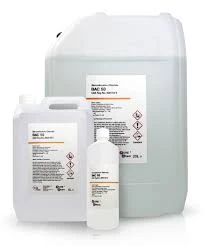chloro methyl isothiazolinone
Chloro Methyl Isothiazolinone Understanding Its Role and Impact
Chloro methyl isothiazolinone (CMI), a biocide and preservative, has garnered attention across various industries, particularly in personal care products and household cleaning agents. It is known for its effective antimicrobial properties, primarily used to prevent the growth of bacteria and fungi in formulations. As with many chemical agents, the usage of CMI carries both advantages and concerns, making it important to understand its characteristics, applications, and safety implications.
Chemical Properties and Functionality
CMI falls under the class of isothiazolinones, a group of compounds widely recognized for their efficacy in preserving products. This chemical is a pale yellow liquid at room temperature and has a slightly pungent odor. It is soluble in water and various organic solvents, which makes it versatile for numerous formulations.
The compound primarily functions as a potent antimicrobial agent. Its mode of action involves disrupting cellular processes in microbes, ultimately leading to cell death. This property is particularly valuable in preventing microbial contamination in industrial and consumer products, which can spoil and lead to safety concerns for users.
Applications of Chloro Methyl Isothiazolinone
CMI is commonly used in personal care products such as shampoos, conditioners, lotions, and creams. In these formulations, it helps maintain product integrity by preventing microbial growth, thereby enhancing shelf life and ensuring safety for consumers. In addition, CMI finds its applications in various industrial sectors, including paints, adhesives, and coatings.
Household cleaning products also frequently contain CMI, as it serves to extend the longevity and effectiveness of these cleaning agents. With increasing consumer awareness of hygiene, the demand for effective preservatives like CMI has surged, making it a staple in many cleaning and sanitization products.
chloro methyl isothiazolinone

Safety and Regulatory Concerns
Despite its utility, CMI has faced scrutiny regarding its safety profile. The compound is known to cause allergic reactions and skin sensitization in some individuals, which raises concerns particularly in personal care products that come into direct contact with the skin. The European Union has implemented strict regulations regarding the concentration limits of CMI in cosmetic products, reflecting caution toward potential health risks.
Research has indicated that exposure to CMI can lead to skin irritation, and in some cases, respiratory issues with prolonged exposure. Such findings underscore the importance of adhering to safety guidelines when formulating products that include CMI. Manufacturers are encouraged to conduct thorough risk assessments to ensure their products do not exceed the recommended exposure levels and to label their products accurately to inform consumers of potential allergies.
Alternatives and Future Perspectives
As consumer preferences shift towards more natural and less harmful ingredients, the industry is increasingly exploring alternatives to CMI. Natural preservatives, such as essential oils and plant extracts, are gaining traction as safer substitutes that align with eco-friendly trends. Companies are investing in research to develop innovative formulations that maintain product efficacy without compromising consumer safety.
The ongoing dialogue around CMI’s safety and regulations highlights the broader trend of increasing scrutiny towards chemical preservatives and their impact on health and the environment. Stakeholders in the industry, including manufacturers, regulators, and consumers, must work together to find a balance between effective product preservation and ensuring consumer safety.
Conclusion
Chloro methyl isothiazolinone is a powerful preservative that plays a vital role in various applications, particularly in personal care and cleaning products. However, its potential health risks and regulatory challenges cannot be overlooked. As the industry evolves, the focus on safety, transparency, and sustainability will likely drive changes in how preservatives are utilized, leading to a future where safer alternatives take precedence. Understanding CMI and its implications is crucial for consumers and manufacturers alike as they navigate the complexities of modern product formulation.
-
Water Treatment with Flocculant Water TreatmentNewsJun.12,2025
-
Polymaleic AnhydrideNewsJun.12,2025
-
Polyaspartic AcidNewsJun.12,2025
-
Enhance Industrial Processes with IsothiazolinonesNewsJun.12,2025
-
Enhance Industrial Processes with PBTCA SolutionsNewsJun.12,2025
-
Dodecyldimethylbenzylammonium Chloride SolutionsNewsJun.12,2025





